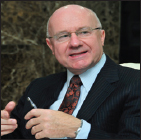Translate this page into:
The global burden of oral diseases - aligning around common goals for improved advocacy outcomes
-
Received: ,
Accepted: ,

The Global Burden of Disease (GBD) Studies report that the cumulative burden of oral conditions dramatically increased in the 25 years to 2015.[1] The burden rose from 2.5 billion people in 1990 to 3.5 billion in 2015, or approximately half (48% age-standardized prevalence) of the human population of the planet suffered a disability from oral conditions. The single most prevalent of the more than 300 conditions reported in GBD 2015 was untreated caries in the permanent dentition, affecting 2.5 billion people (34% age-standardized prevalence). Severe chronic periodontitis ranked as the sixth most prevalent of all conditions affecting 538 million people.
Over that same period where the prevalence of untreated caries in permanent teeth increased by 1 billion people, technology in dental services has experienced tremendous advances. Reparative and esthetic dentistry has witnessed major strides in digitization and automation, especially in the areas of imaging, CAD/CAM, and materials science. More durable restorative materials, including some biomaterials with optical and mechanical properties closer and closer to the natural tooth substances of enamel and dentine, are in widespread use. Tooth movement in dentofacial orthopedics and orthodontics has advanced also through imaging and digitization and the advent of the increasingly popular clear aligner. Where tooth loss has occurred, either through disease-related extractions or trauma, dental implants can be placed providing a more natural solution with improved esthetic and functional outcomes over the acrylic removable denture.
Unfortunately, these strides in technology for restorative and surgical dentistry have largely bypassed the essentially needed primary and secondary prevention of oral diseases and have enabled growth in services for beauty and vanity rather than any reduction in disease and disabilities and the social and economic burden on humanity.
Contemporary technologies are only accessible where there is access to licensed dentists, and in most situations, the consumer must have the ability to pay a significant, if not total contribution to the cost, due to health reimbursement and coverage frequently excluding oral diseases. The estimated direct costs of technology-driven dental services amount to $356.8 billion globally, together with indirect costs of a further $187.6 billion through loss of wages, reduced school hours, transportation, etc.[2] Yet dental diseases are largely preventable and occur through lack of knowledge and health literacy or adverse and limited choices about everyday behaviors in the bathroom, kitchen, or fast-food outlet. Limited access to services, the direct and indirect financial implications, and the everyday underlying behavioral causes of oral diseases mean that preventive efforts by dental professionals are unlikely to have any effect on the overall burden of oral disease.
Hence, who should be the main actors in the advocacy for the prevention of oral diseases and the promotion of oral health? Are there lessons to be learned from other diseases and conditions that have achieved greater success or not witnessed the stunning increase of 1 billion people? Oral diseases lack a global, cause-related advocacy voice that includes all stakeholders – is it that other such advocacy groups (heart disease, diabetes, obesity, and lung diseases) that include wide spectra of stakeholders are able to make more compelling arguments for resources and policies? Are oral health actors out-played in this highly competitive and emotive environment as they may not include all stakeholders?
Oral health and dentistry are seldom considered to reside in the mainstream of health and medicine. Historically, dentistry organized itself as a profession independent of medicine and still today educates and trains its providers in dental schools usually both physically and administratively outside of the medical school, at times not even on the same campus. An outcome of this academic separation is often described by the phrase as “the mouth being out of the body.” The health professions, policy-makers, funding agencies, and society have long accepted this dichotomy. However, in the past decade, there has been an emerging and increasing body of evidence of bidirectional links between poor oral health and numerous remote organs and systemic conditions including diabetes, cardiovascular disease and stroke, pre-term low birthweight babies, and Alzheimer’s disease, among others. Interprofessional education and interprofessional collaboration may help “to place the mouth back in the body,” and in so doing benefit from the management of common risk factors for non-communicable diseases (NCDs) such as sugar, tobacco, alcohol, hygiene, water quality, and health literacy that will improve both general and oral health. The social and commercial determinants for many NCD apply equally to oral diseases.[3,4]
The time is now for oral health advocates to work collaboratively with other disease-advocacy groups aligning around common established goals with the ultimate aim of a realization that the population of the planet will never be healthy, while the common risk factors are not under control, and in doing so, one of the many dividends will be the reduction in oral diseases.
Financial support and sponsorship
Nil.
Conflicts of interest
There are no conflicts of interest.
REFERENCES
- Global, regional, and national prevalence, incidence, and disability-adjusted life years for oral conditions for 195 countries 1990-2015: A systematic analysis for the global burden of diseases, injuries, and risk factors. J Dent Res. 2017;96:380-7.
- [Google Scholar]
- Global-, regional-, and country-level economic impacts of dental diseases in 2015. J Dent Res. 2018;97:501-7.
- [Google Scholar]
- Global oral health inequalities: Task group implementation and delivery of oral health strategies. Adv Dent Res. 2011;23:259-67.
- [Google Scholar]
- The common risk factor approach: A rational basis for promoting oral health. Community Dent Oral Epidemiol. 2000;28:399-406.
- [Google Scholar]





